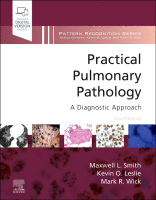Physical Address
304 North Cardinal St.
Dorchester Center, MA 02124

You’re Reading a Preview Become a Clinical Tree membership for Full access and enjoy Unlimited articles Become membership If you are a member. Log in here

Mesothelioma Clinical findings in pleural mesothelioma The World Health Organization (WHO) defines mesothelioma as a malignant neoplasm arising from the mesothelial cells lining the body cavity surfaces and growing in a diffuse or, less commonly, localized invasive fashion. About 90%…

Lung cancer remains the leading cause of cancer death in the United States, with 236,000 new cases estimated annually and 130,180 estimated deaths (about 350 deaths per day). Benign and borderline malignant tumors of the lung are far outnumbered by…

There is a limited group of pulmonary lesions that one can classify as pseudoneoplastic, but their conditions constitute a significant aggregation in absolute numbers. Some are categorized as malformative or reactive, including pulmonary hamartomas (PHs); selected inflammatory pseudotumors (IPTs) (plasma…

The most common pulmonary neoplasm is a metastasis from outside the lungs. Based on autopsy data, the lungs are involved by metastases in 25% to 55% of malignant diseases. In up to 25% of those cases, the pulmonary parenchyma and…

Carcinoma of the lung is the second most common cancer worldwide (over 2 million new cases in 2020) and is the number one cause of cancer death, at 1.8 million worldwide in 2020. , Owing to this frequency, lung specimens,…

The recent publications of the 4th edition of the World Health Organization (WHO) Classification of Tumors of the Haematopoietic and Lymphoid Tissues and the 5th Edition of the WHO Classification of Thoracic Tumors provide the most up to date diagnostic…

Introduction Primary malignant pleuropulmonary tumors showing sarcomatoid features are exceedingly uncommon. Overwhelmingly, such lesions are epithelial in nature; neoplasms with a mesenchymal lineage in the lung and pleura are most often metastatic, arising from deep soft tissue sites or the…

Introduction and general considerations Neuroendocrine tumors (NETs) are grouped together based on common “neuroendocrine” morphological features and the finding of intracellular ultrastructural neurosecretory granules whose presence is detected today mainly by immunohistochemistry (IHC). There has been movement toward uniformity of…

Introduction Lung transplantation may offer a longer survival and improved quality of life to patients with end-stage lung disease. Common indications for lung transplantation are listed in Table 13.1 . Bilateral lung transplantation is the norm for cystic fibrosis and…